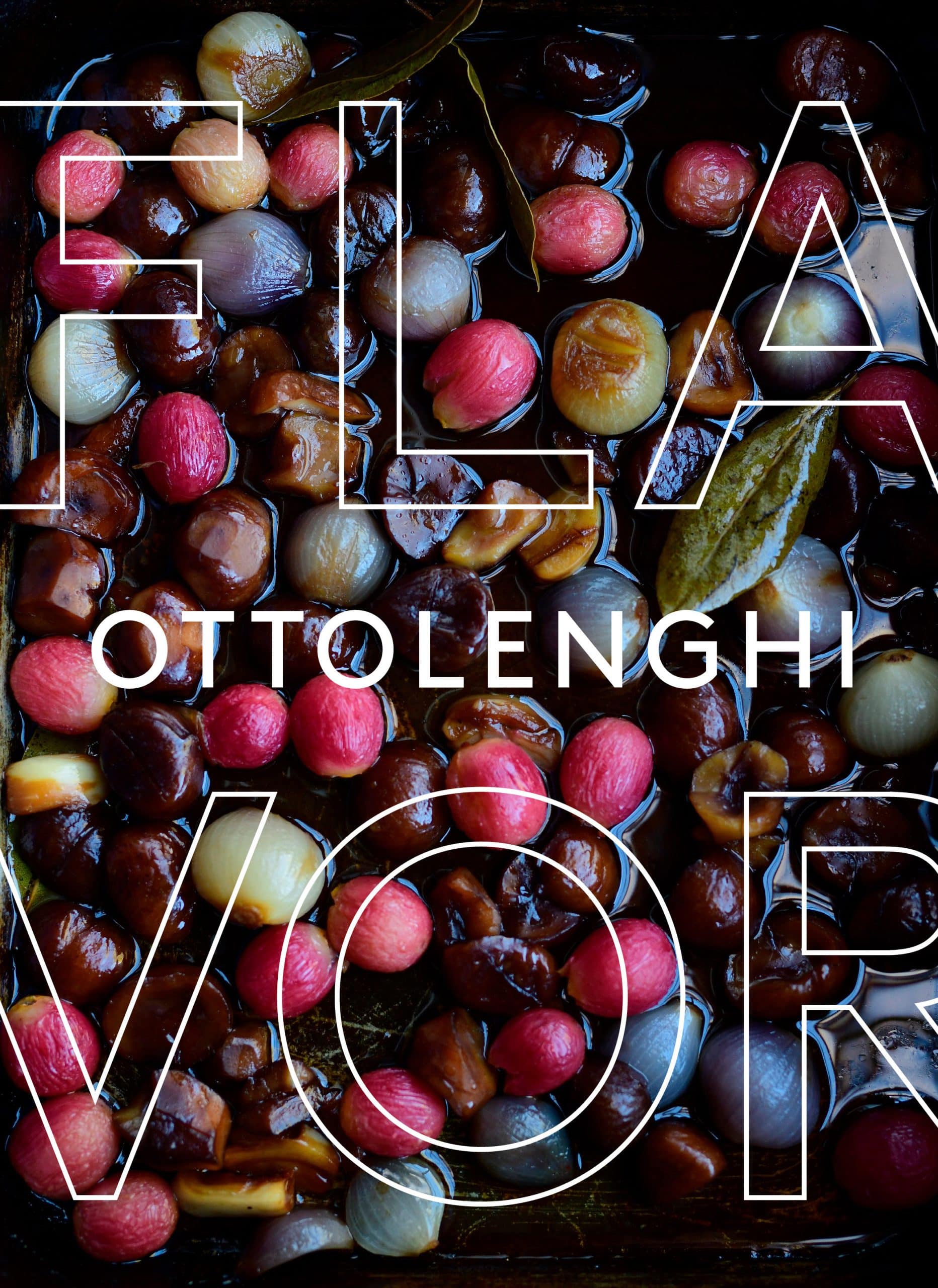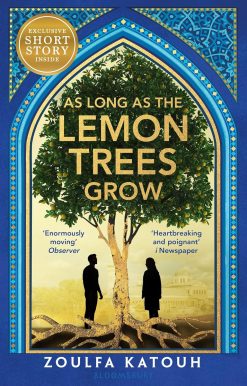Ottolenghi Flavor: A Cookbook
45.00 JOD
Please allow 2 – 5 weeks for delivery of this item
Description
The New York Times bestselling author of Plenty joins up with the Ottolenghi Test Kitchen’s Ixta Belfrage to reveal how flavor is amplified in more than 100 innovative, super-delicious plant-based recipes.Yotam Ottolenghi–the beloved chef and influencer who has captured the hearts of home cooks looking for inspiration and great-tasting vegetable cooking–is back. In Ottolenghi Flavor, Yotam collaborates with longtime colleague Ixta Belfrage to identify the principles behind his stylish, innovative brand of cooking with a new collection of revolutionary plant-based recipes. Yotam and Ixta build on the vegetarian cooking that made Plenty and Plenty More phenomenal bestsellers, this time adding Italian and Mexican influences and revealing how to understand, build, and amplify flavor through more than 100 vegetarian recipes (half are also vegan). In essence, Yotam and Ixta show how to evolve creatively, be intuitive in the kitchen, and become ever-better cooks through the “three P’s”:Process: Key reactions that happen when vegetables or supporting ingredients are cooked.Pairing: Matching vegetables with flavorings to accentuate their qualities.Produce: Identifying key ingredients that make vegetables shine. With surefire hits, such as Stuffed Eggplant in Curry and Coconut Dal, Spicy Mushroom Lasagna, and Vegetable Schnitzel, plus stunning photographs of nearly every recipe, Ottolenghi Flavor is the exciting, next-level approach to vegetable cooking that Yotam’s fans, home cooks of all levels, and vegetable lovers everywhere have been craving.
Additional information
| Weight | 1.60 kg |
|---|---|
| Dimensions | 3.35 × 20.22 × 4.94 cm |
| by | |
| Format | Hardback |
| Language | |
| Pages | 320 |
| Publisher | |
| Year Published | 2020-10-13 |
| Imprint | |
| Publication City/Country | Canada |
| ISBN 10 | 0525610138 |
| About The Author | Yotam Ottolenghi is the author of the New York Times best-selling cookbooks Plenty, Ottolenghi, Plenty More, NOPI, Sweet, and Jerusalem, which was awarded Cookbook of the Year by the International Association of Culinary Professionals and named Best International Cookbook by the James Beard Foundation. He contributes to the New York Times Cooking section and has a weekly column in The Guardian. He lives in London, where he co-owns an eponymous group of restaurants and the fine-dining restaurants Nopi and Rovi. Ixta Belfrage spent her youth dipping her fingers into mixing bowls in places as far-flung as Italy, Mexico, and Brazil. She formally began her culinary career at Ottolenghi's Nopi restaurant before moving to the Ottolenghi Test Kitchen, where she has worked for four years, and contributing to Yotam's columns. She lives in London, where she makes regular guest chef appearances at some of the city's top restaurants. |
"With a book called Flavor, it’s clear from the outset what you’re getting into. And with Ottolenghi’s name attached to it, you know it’s going to be special. "—National Post"What sets [Ottolenghi] Flavor apart from its predecessors is its focus on explanation—there are in-depth profiles of the cooking techniques and flavour pairings at play in these recipes." —Chatelaine"The food is phenomenal…. New readers will be coached and coaxed through each technique, while long-timers will find something new here—even if they own every other book in the chef’s oeuvre." —Epicurious"A new Yotam Ottolenghi cookbook is always an event, and the vegetable-based Ottolenghi Flavor is a winner."—Julian Armstrong, Montreal Gazette" With compelling dishes [in Ottolenghi Flavor], the carnivore in your house won’t notice the absence of meat."—Vancouver Sun"In his newest cookbook, Ottolenghi Flavor, he and his test kitchen’s recipe developer, Ixta Belfrage, break down the fundamentals of cooking.. [and] will have you cooking in an all-new and very flavourful way."—BC Living |
|
| Excerpt From Book | IntroductionI have never been shy about my love of vegetables. I have been singing the praises of cauliflowers, tomatoes, lemons, and my old friend the mighty eggplant for over a decade. I have done this on my own—in cooking demos, on book tours, and in the pages of books and magazines—and I have done this in a group, in lively discussions with colleagues in my restaurants, and in the test kitchen. It’s become my mission to present vegetables in new and exciting ways and I have embraced it with nothing but enthusiasm.Still, in the spirit of openness, I must confess to a small niggling doubt that creeps in now and then. How many more ways are there to fry an eggplant, to slice a tomato, to squeeze a lemon, or to roast a cauliflower? How many more secrets are there to be discovered in a handful of lentils or a bowl of polenta?The answer, I am delighted to report, is many. My journey of discovery into the world of vegetables—by which I mean anything, really, that originates from a plant—has taken me in all sorts of directions that I simply hadn’t imagined. If my first vegetable book, Plenty, was the honeymoon period, a great big party where certain vegetables—peppers, tomatoes, eggplants, mushrooms—got a whole chapter to themselves, Plenty More was all about process; recipe were divided into the ways in which the vegetables were treated: mashed or tossed or grilled and so forth. Flavor is the third book in the series, it’s about understanding what makes vegetables distinct and, accordingly, devising ways in which their flavors can be ramped up and tasted afresh; it’s about creating flavor bombs, especially designed for veg. This is done in three ways. PROCESS, PAIRING, PRODUCEThe first step has to do with some processes that happen to vegetables when they are cooked, or to some key ingredients with which they are cooked. The second is about pairing; what you match a vegetable with to draw out one of its distinct qualities. The third deals with the produce itself: the sheer depth of flavor that certain ingredients naturally possess that allows them to play a starring role in a dish, more or less by themselves, or to prop up and brightly illuminate other vegetables.So, after Plenty and Plenty More, Flavor is “Plenty 3,” if you like, or P3, with the three P’s (process, pairing, and produce) being the key concepts for explaining what makes certain vegetable dishes taste so good. Let me give you some examples to illustrate this, using some of my favorite ingredients: celery root (to demonstrate process), tamarind and lime (to think about pairing), and mushrooms (to show how it can be just the produce itself doing the work).First, process. Three recipes in this book involve cooking celery root whole for more than two hours, then dressing and serving it in different ways. During the initial cooking of the celery root, and before any other ingredient is added, something truly magical happens. Much of the water in the celery root evaporates, its flesh turns from white to golden brown, and it becomes sweeter and richer. This browning and caramelizing, which happens to many veg (and non-veg) when they are cooked in a certain way, is a key process that teases out flavor from them. Whatever you choose to do to the celery root after this is less important. Indeed, you don’t need to do anything more to it at all, if you don’t want to; the browning process is such a flavor bomb that it’s heavenly when eaten at this stage, cut into wedges and served with a squeeze of lemon or a dollop of cr.me fra.che. Other processes that have a similarly terrific effect are charring, infusing, and aging (which is mostly done to ingredients well before they reach your kitchen), all of which transform and elevate vegetables to great heights.Illustrating my concept of pairing is a little less straightforward because, every time you cook, you obviously pair ingredients together. What I have done, though, is identify four basic pairings—sweetness, fat, acidity, and chile heat (as in spicy heat)—that are fundamental. Introducing one or more of these key pairings to a dish has the effect of showing the vegetables (or fruit) with which they are partnered in a completely new light. The asparagus salad with tamarind and lime (page 171) is a great example. Many argue that asparagus is so magnificent—with a subtle, yet refined flavor—that it doesn’t need to be paired with anything, really, except some oil or butter and possibly a poached egg. I have made this same point myself in the not-sodistant past. What I have learned more recently, though, is that asparagus can actually stand its ground when paired with robust and purportedly dominant ingredients. It does this particularly well when the paired element is complex and multilayered. In the salad I mentioned, raw asparagus is paired with three sources of acidity: lime juice, vinegar, and tamarind, each with its own particular characteristics. All these layers and iterations of sour come together in a single harmony that heightens and alters the taste of raw asparagus in a way that really opens your eyes to the vegetables. The third concept has to do with produce. Vegetables, famously, are not as good at imparting flavor as are meat and fish, because of their high water content and the low levels of fat and protein they contain. Some, though, are absolutely brilliant at it. Our spicy mushroom lasagne (page 228) is proof of the power of this particular veg to carry the weight of a whole complex dish on its own little shoulders, giving any meat a good run for its money. Not many vegetables can do this, delicious as they may be, but since mushrooms are bursting with umami—that satisfying savory flavor that makes tomatoes, soy sauce, cheese, and many other ingredients so impactful—they are perfectly capable of providing ample flavor and some serious texture to give vegetarian dishes a very solid core. Other plant-based ingredients that show similarly impressive skills are alliums (onions and garlic), nuts and seeds, and fruit. All four are the types of produce that you can rely on to do some seriously hard work in your kitchen. While making a delicious recipe can be simple, great cooking is never the result of one element in isolation—it is the interplay of different types of processes, pairings, and produce in one dish that elevates and makes it exquisite. Using the lasagne example again, this dish clearly relies heavily on mushroom umami (produce), but it also benefits greatly from an interplay of different fats (pairing) and the complex art of aging cheese (process). The structure of this book, in which each chapter highlights one particular kind of process, pairing, or produce, is, therefore, not to undermine or deny the existence of any other elements in a recipe; its purpose is to highlight the USP (unique selling point) of a dish, a particular element at the core that makes it particularly delicious or special. |
Only logged in customers who have purchased this product may leave a review.






Reviews
There are no reviews yet.